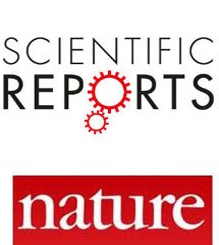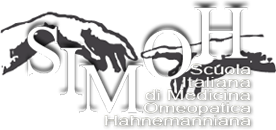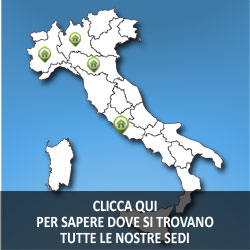10 Settembre 2018 Nature – Scientific Reports volume 8, Article number: 13562 (2018).
“Ultra diluizioni di Rhus toxicodendron hanno attenuato le citochine pro infiammatorie e i mediatori ROS del dolore neuropatico nei ratti”.
Con buona pace dei negazionisti dell’omeopatia, a Settembre 2018 la rivista scientifica Nature Scientific Reports ha pubblicato un importante lavoro che dimostra in modo inequivocabile gli effetti delle alte diluizioni omeopatiche e la loro efficacia terapeutica.
Si tratta, forse, della più importante ricerca sperimentale che sia stata mai pubblicata sulla medicina omeopatica da una delle più autorevoli riviste scientifiche al mondo: «Ultra-diluted Toxicodendron pubescens attenuates pro-inflammatory cytokines and ROS- mediated neuropathic pain in rats».
Un gruppo di studi di particolare importanza che ha consentito ai ricercatori di dimostrare in modo conclusivo che le dosi omeopatiche (ad alte diluizioni e dinamizzazioni) di Rhus toxicodendron (Rhus Tox.) sono risultate significativamente più efficaci del placebo nel trattamento della neuropatia nei ratti.
L’ampia ricerca pubblicata ha consentito di testatare varie diluizioni di Rhux Tox. dimostrando che ciascuna potenza testata, comprese quelle ben oltre il numero di Avogadro, ha sempre determinato profondi e ben identificabili effetti sulla neuropatia.
Il lavoro pubblicato da Nature ha, inoltre, mostrato che gli effetti terapeutici del medicinale omeopatico sperimentato sono risultati simili a quelli di un noto farmaco convenzionale, il Gabapentin; ma la prescrizione del rimedio omeopatico è risultata molto più sicura e priva di effetti collaterali.
Il lavoro conferma in modo ampiamente significativo che la medicina omeopatica ha sia effetti biologici che efficacia clinica. Conferme di efficacia che costituiscono quanto già avvalorato da moltissimi altri lavori peer reviewed, scientificamente sviluppati nella ricerca di base in campo chimico, fisico e biologico; nella ricerca pre-clinica in vitro e in vivo; nei lavori clinici controllati e randomizzati Vs placebo o farmaco di controllo; nei lavori clinici osservazionali, retrospettivi, prospettici e trasversali; nei case report (casi clinici); nelle revisioni sistemiche, qualitative e quantitative; nelle Ricerche cliniche e sperimentali in veterinaria, ecc.
Nature Articolo completo
References
1. Colloca, L. et al. Neuropathic pain. Nature Reviews Disease Primers 3, 17002 (2017).
2. Liu, N. et al. Antinociceptive e ects of gentiopicroside on neuropathic pain induced by chronic constriction injury in mice: a
behavioral and electrophysiological study. Canadian journal of physiology and pharmacology 94, 769–778 (2016).
3. Kim, H. J. Berberine ameliorates allodynia induced by chronic constriction injury of the sciatic nerve in rats. Journal of medicinal food 18, 909–915 (2015).
4. Shahid, M., Subhan, F., Ahmad, N. & Ullah, I. A bacosides containing Bacopa monnieri extract alleviates allodynia and hyperalgesia in the chronic constriction injury model of neuropathic pain in rats. BMC complementary and alternative medicine 17, 293 (2017).
5. Chanchal, S. K. et al. In vivo and in vitro protective e ects of omeprazole against neuropathic pain. Scienti c reports 6, 30007 (2016).
6. Attal, N. Pharmacologic treatment of neuropathic pain. Acta Neurologica Belgica 101, 53–64 (2001).
7. Cohen, S. P. & Mao, J. Neuropathic pain: mechanisms and their clinical implications. BMJ: British Medical Journal (Online) 348
(2014).
8. Jia, S., Zhang, Y. & Yu, J. Antinociceptive e ects of isosakuranetin in a rat model of peripheral neuropathy. Pharmacology 100,
201–207 (2017).
9. Kishore, L. & Singh, R. E ects of di erent homeopathic potencies of Cephalendra indica in treatment of neuropathic pain in
streptozotocin induced diabetes. Bulletin of Faculty of Pharmacy, Cairo University 55, 273–280 (2017).
10. Mohammadi, R., Amini, K. & Charehsaz, S. Homeopathic treatment for peripheral nerve regeneration: an experimental study in a rat sciatic nerve transection model. Homeopathy 101, 141–146 (2012).
11. Boyd, A. et al. Herbal medicinal products or preparations for neuropathic pain. e Cochrane Library (2017).
12. Boyd, A. et al. Herbal medicinal products or preparations for neuropathic pain and bromyalgia. Cochrane Database of Systematic
Reviews 5 (2013).
13. Muthuraman, A. & Singh, N. Attenuating e ect of Acorus calamus extract in chronic constriction injury induced neuropathic pain
in rats: an evidence of anti-oxidative, anti-in ammatory, neuroprotective and calcium inhibitory e ects. BMC complementary and alternative medicine 11, 24 (2011).
14. Kaur, G., Bali, A., Singh, N. & Jaggi, A. S. Ameliorative potential of Ocimum sanctum in chronic constriction injury-induced
neuropathic pain in rats. Anais da Academia Brasileira de Ciências 87, 417–429 (2015).
15. Zhou, J. et al. Paeoni orin and albi orin attenuate neuropathic pain via mapk pathway in chronic constriction injury rats. Evidence-
based Complementary and Alternative Medicine 2016 (2016).
16. Nurmikko, T. J. et al. Sativex®successfully treats neuropathic pain characterised by allodynia: a randomised, double-blind, placebo-
controlled clinical trial. Pain 133, 210–220 (2007).
17. Babbar, S. et al. Pharmacokinetic analysis of capsaicin a er topical administration of a high-concentration capsaicin patch to
patients with peripheral neuropathic pain. erapeutic drug monitoring 31, 502–510 (2009).
18. Fisher, P. & Scott, D. A randomized controlled trial of homeopathy in rheumatoid arthritis. Rheumatology 40, 1052–1055 (2001).
19. Dos Santos, A., Perazzo, F., Cardoso, L. & Carvalho, J. In vivo study of the anti-inflammatory effect of Rhus toxicodendron.
Homeopathy 96, 95–101 (2007).
20. Verma, P. & Vaid, I. (Jain Publishers, New Delhi, India, 2002).
21. Patil, C. et al. Immunomodulatory activity of Toxicodendron pubescens in experimental models. Homeopathy 98, 154–159 (2009).
22. Patil, C. R. et al. Dual e ect of Toxicodendron pubescens on Carrageenan induced paw edema in rats. Homeopathy 98, 88–91 (2009).
23. Patel,D.R.etal.Toxicodendronpubescensretainsitsanti-arthritice cacyat1M,10MandCMhomeopathicdilutions.Homeopathy
101, 165–170 (2012).
24. Patil, C. R. et al. Modulation of arthritis in rats by Toxicodendron pubescens and its homeopathic dilutions. Homeopathy 100,
131–137 (2011).
25. Guimarães, F. S. et al. Stimulation of lymphocyte anti-melanoma activity by co-cultured macrophages activated by complex
homeopathic medication. BMC cancer 9, 293 (2009).
26. Karp, J.-C. et al. Treatment with Ruta graveolens 5CH and Rhus toxicodendron 9CH may reduce joint pain and sti ness linked to
aromatase inhibitors in women with early breast cancer: results of a pilot observational study. Homeopathy 105, 299–308 (2016).
27. Chen, L., Chen, W., Qian, X., Fang, Y. & Zhu, N. Liquiritigenin alleviates mechanical and cold hyperalgesia in a rat neuropathic pain
model. Scienti c reports 4, 5676 (2014).
28. De Vry, J., Kuhl, E., Franken-Kunkel, P. & Eckel, G. Pharmacological characterization of the chronic constriction injury model of neuropathic pain. European journal of pharmacology 491, 137–148 (2004).
29. Bennett, G. J. & Xie, Y.-K. A peripheral mononeuropathy in rat that produces disorders of pain sensation like those seen in man.
Pain 33, 87–107 (1988).
30. Espinosa‐Juárez, J. V., Jaramillo‐Morales, O. A. & López‐Muñoz, F. J. Haloperidol Decreases Hyperalgesia and Allodynia Induced
by Chronic Constriction Injury. Basic & clinical pharmacology & toxicology (2017).
31. Dowdall, T., Robinson, I. & Meert, T. F. Comparison of five different rat models of peripheral nerve injury. Pharmacology
Biochemistry and Behavior 80, 93–108 (2005).
32. Morani, A. S. & Bodhankar, S. L. Neuroprotective e ect of vitamin E acetate in models of mononeuropathy in rats. Neuroanatomy
7, 33–37 (2008).
33. Asiedu, M., Ossipov, M. H., Kaila, K. & Price, T. J. Acetazolamide and midazolam act synergistically to inhibit neuropathic pain. Pain
148, 302–308 (2010).
34. Bhat, R. A. et al. E ect of ursolic acid in attenuating chronic constriction injury‐induced neuropathic pain in rats. Fundamental &
clinical pharmacology 30, 517–528 (2016).
35. Patil, K. R. et al. Pentacyclic triterpenoids inhibit IKKβ mediated activation of NF-κB pathway: in silico and in vitro evidences. PloS
one 10, e0125709 (2015).
36. Shanbhag, D. & Khandagale, A. Screening and standardization of Terminalia arjuna used as medicine in homeopathy using HPTLC
method. Int J Anal Bioanal Chem 1, 57–60 (2011).
37. Eruslanov, E. & Kusmartsev, S. In Advanced protocols in oxidative stress II 57–72 (Springer, 2010).
38. Marklund, S. & Marklund, G. Involvement of the superoxide anion radical in the autoxidation of pyrogallol and a convenient assay
for superoxide dismutase. e FEBS Journal 47, 469–474 (1974).
39. Aebi, H. In Methods in enzymology Vol. 105 121–126 (Elsevier, 1984).
40. Goecks,C.S.etal.Assessmentofoxidativeparametersinratspinalcorda erchronicconstrictionofthesciaticnerve.Neurochemical
research 37, 1952–1958 (2012).
41. Kumar, A., Meena, S. & Pottabathini, R. E ect of Ashwagandha (Withania somnifera) against chronic constriction injury induced
behavioral and biochemical alterations: possible involvement of nitric oxide mechanism. International Journal of Nutrition,
Pharmacology, Neurological Diseases 4, 131 (2014).
42. Kim, H. K. et al. Reactive oxygen species (ROS) play an important role in a rat model of neuropathic pain. Pain 111, 116–124 (2004).
43. Freire, M. A. M., Guimarães, J. S., Gomes-Leal, W. & Pereira, A. Pain modulation by nitric oxide in the spinal cord. Frontiers in
neuroscience 3, 24 (2009).
44. Naik, A. K., Tandan, S. K., Kumar, D. & Dudhgaonkar, S. P. Nitric oxide and its modulators in chronic constriction injury-induced
neuropathic pain in rats. European journal of pharmacology 530, 59–69 (2006).
45. Kumar, A., Meena, S., Kalonia, H., Gupta, A. & Kumar, P. E ect of nitric oxide in protective e ect of melatonin against chronic
constriction sciatic nerve injury induced neuropathic pain in rats. (2011).
46. Naik, A. K. et al. Role of oxidative stress in pathophysiology of peripheral neuropathy and modulation by N‐acetyl‐l‐cysteine in rats.
European Journal of Pain 10, 573–573 (2006).
Comunicazione a cura di:
Centro Ricerche Biomediche SIMOH
Scuola Italiana di Medicina OmeopaticaHahnemanniana
Via Giovanni Miani, 8 – 00154 Roma
www.omeopatiasimoh.net – info@omeopatiasimoh.net

